The tragic loss of Lieutenant John A. Pritchard and Radioman Benjamin A. Bottoms will be remembered as part of a great act of heroism. Their sacrifice in the performance of duty comports with the highest traditions of the Armed Services.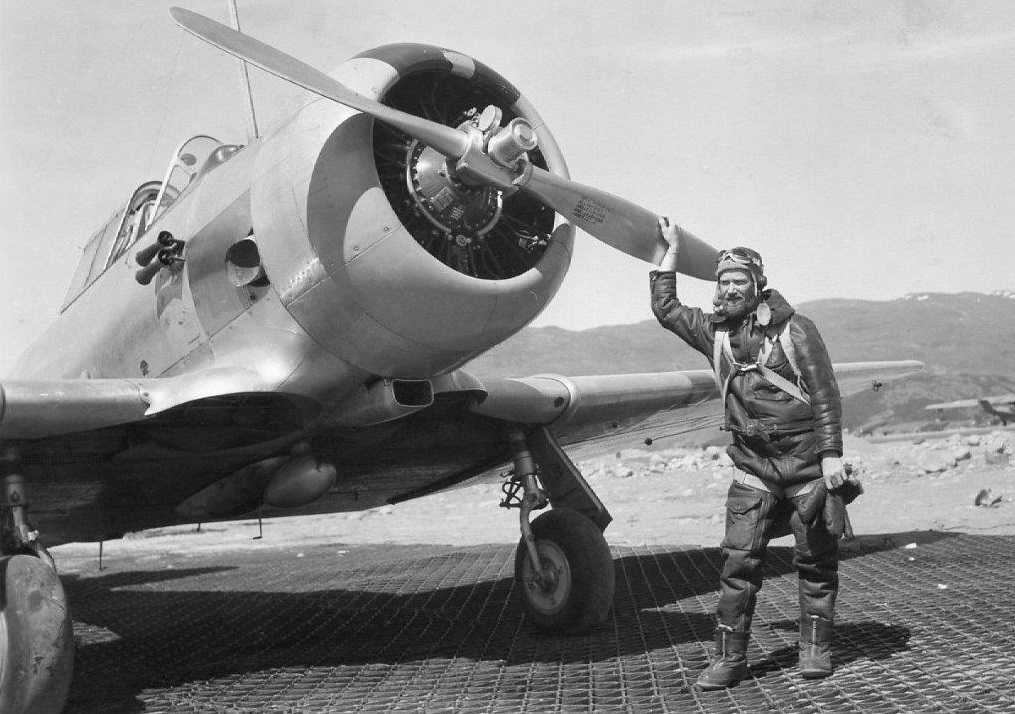
Letter from Chief of U.S. Army Air Corps, Major General George Stratemeyer, to commander of Coast Guard Greenland Patrol, 1943
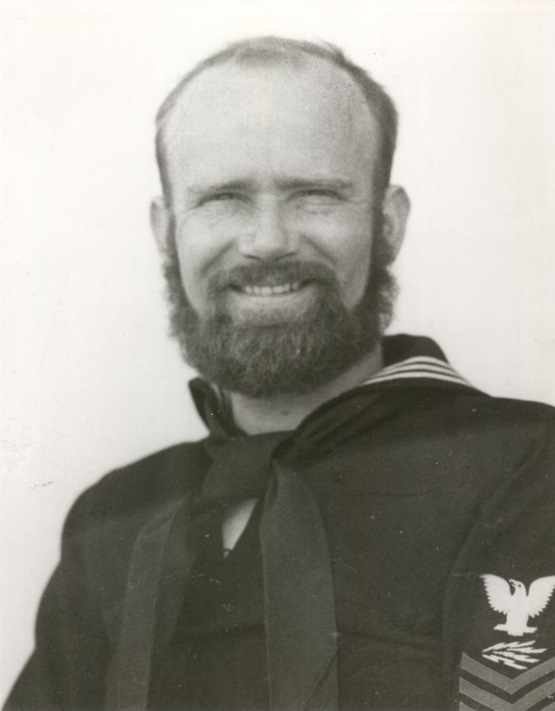 Eighty years ago, Coast Guard aviation radioman, Benjamin Autrell Bottoms, and his pilot, Lt. John Pritchard, flew off the Greenland icecap with an injured Army Air Corps aviator. They never returned to their Coast Guard cutter anchored in the sheltered waters on the coast.
Eighty years ago, Coast Guard aviation radioman, Benjamin Autrell Bottoms, and his pilot, Lt. John Pritchard, flew off the Greenland icecap with an injured Army Air Corps aviator. They never returned to their Coast Guard cutter anchored in the sheltered waters on the coast.
Bottoms was born in 1913, in Cumming, Georgia. He grew up in farm country near Marietta, Georgia, where he graduated from Marietta High School in 1931. On October 13, 1932, he enlisted in the U.S. Coast Guard and was trained at Receiving Unit, New London, Connecticut. In 1933, he began serving with the destroyer force that the Coast Guard operated during Prohibition, including Coast Guard destroyer Herndon, out of Boston, and the Conyngham, stationed in Philadelphia.
In December 1933, Bottoms transferred to the communications division at the Coast Guard Yard at Curtis Bay, Maryland. There, he became interested in the relatively new field of radio operations. From June 1934 to October 1935, he was assigned alternately to the cutters Ossipee and Guthrie, both homeported in Portland, Maine. Following further training at Fort Trumbull Training Station in New London, he served as Third Class Radioman on board cutters homeported in Massachusetts and Maine.
From June to November of 1941, Bottoms was assigned temporarily to the Arctic cutter Northland while it was configured to carry an aircraft. He then returned to the Salem Air Station for a brief time. Early in 1942, he rejoined Northland to serve as First Class Radioman assigned to the J2F-4 Grumman “Duck” 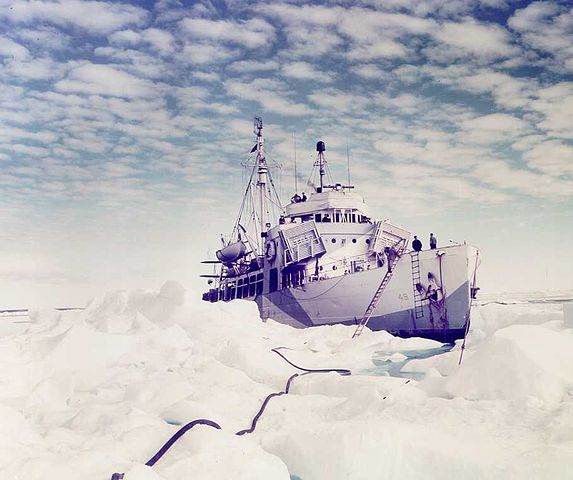 amphibious aircraft attached to the cutter. Northland would serve as flagship of the newly formed Greenland Patrol, which defended the Greenland theater of operations.
amphibious aircraft attached to the cutter. Northland would serve as flagship of the newly formed Greenland Patrol, which defended the Greenland theater of operations.
On November 28, 1942, the Northland lay at anchor in Comanche Bay, on the east coast of Greenland. The cutter received a radio message notifying the commanding officer that a U.S. Army B-17 “Flying Fortress” that crashed on the Greenland’s ice cap. The message included the approximate the position of bomber. As aviation radioman, Bottoms would accompany pilot, Lt. John Pritchard, on the hazardous rescue flight. Though no one had successfully landed a plane on the ice cap, the two men were confident in a successful rescue.
On November 28, 1942, at approximately 10:20 a.m., the amphibious Grumman Duck was lowered over the side of Northland into the water and took off to rescue the Army aircrew. Picking up weak radio signals from the bomber, Bottoms was able to give the Pritchard accu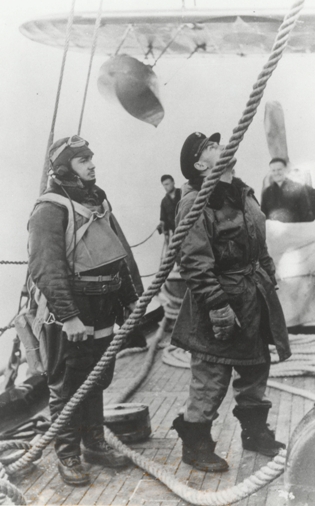 rate bearings on the wrecked B-17. After flying for about 30 minutes over the ice cap, Pritchard spotted the bomber, circled over the downed aviators, dropped a package of medicine, and signaled he was about to land. Regardless of warnings not to land with wheels down, Pritchard set the plane down on the 2,000-foot high ice cap. The wheels of the Duck sank into the snow up to the wing floats.
rate bearings on the wrecked B-17. After flying for about 30 minutes over the ice cap, Pritchard spotted the bomber, circled over the downed aviators, dropped a package of medicine, and signaled he was about to land. Regardless of warnings not to land with wheels down, Pritchard set the plane down on the 2,000-foot high ice cap. The wheels of the Duck sank into the snow up to the wing floats.
Unable to land closer than four miles from the crash site, both Pritchard and Bottoms walked to the B-17. After reaching the bomber, Pritchard told the Army aircrew that his plane could only carry two of them at a time. Two injured men, who could walk with some assistance, came first. With the aid of the uninjured B-17 co-pilot, Pritchard and Bottoms brought the injured airmen back to the Duck. The two injured men had to make rest stops during the return to the J2F-4. As such, Bottoms remained with the men and assisted them while Pritchard and the B-17 co-pilot continued on to the aircraft to prepare it for takeoff.
Remembering the difficulty of landing with wheels down, Pritchard decided to retract the landing gear and take off from the ice using the amphibian aircraft’s pontoons. The two men cleared a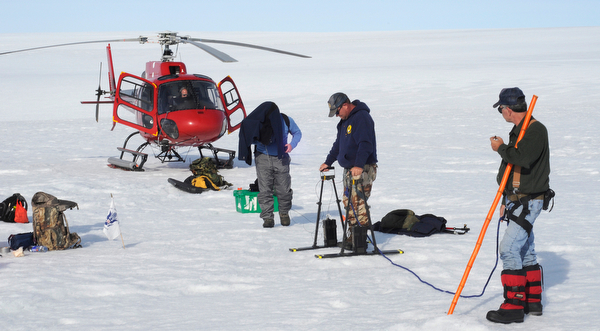 way the snow, raised the J2F-4’s landing wheels and turned the aircraft around to take-off downslope following its incoming tracks. After careening, sliding, and bumping over the ice hummocks, the plane lifted off and returned to Northland.
way the snow, raised the J2F-4’s landing wheels and turned the aircraft around to take-off downslope following its incoming tracks. After careening, sliding, and bumping over the ice hummocks, the plane lifted off and returned to Northland.
On November 29th, the following day, Pritchard and Bottoms resumed flight operations to save the remaining U.S. Army aviators. As on the previous day, they reached the stranded fliers, took one on board and, after a successful take-off, flew toward the cutter. Soon after takeoff, the plane encountered white out conditions. Bottoms radioed to the Northland that they had taken off successfully and needed weather reports. His aircraft never returned to the cutter.
After the storm subsided, Army and Coast Guard parties were organized to search for the lost aircraft. An Army aircraft sighted and identified the crash site, but reported incorrect coordinates. The report noted that the wings were off, but the fuselage was intact. Unfortunately, there was no sign of life. One rescue party pushed over the ice cap to within six miles of the wrecked plane but was unable to reach it.
On the 29th, 29-year-old Benjamin Bottoms was declared missing in action. He was declared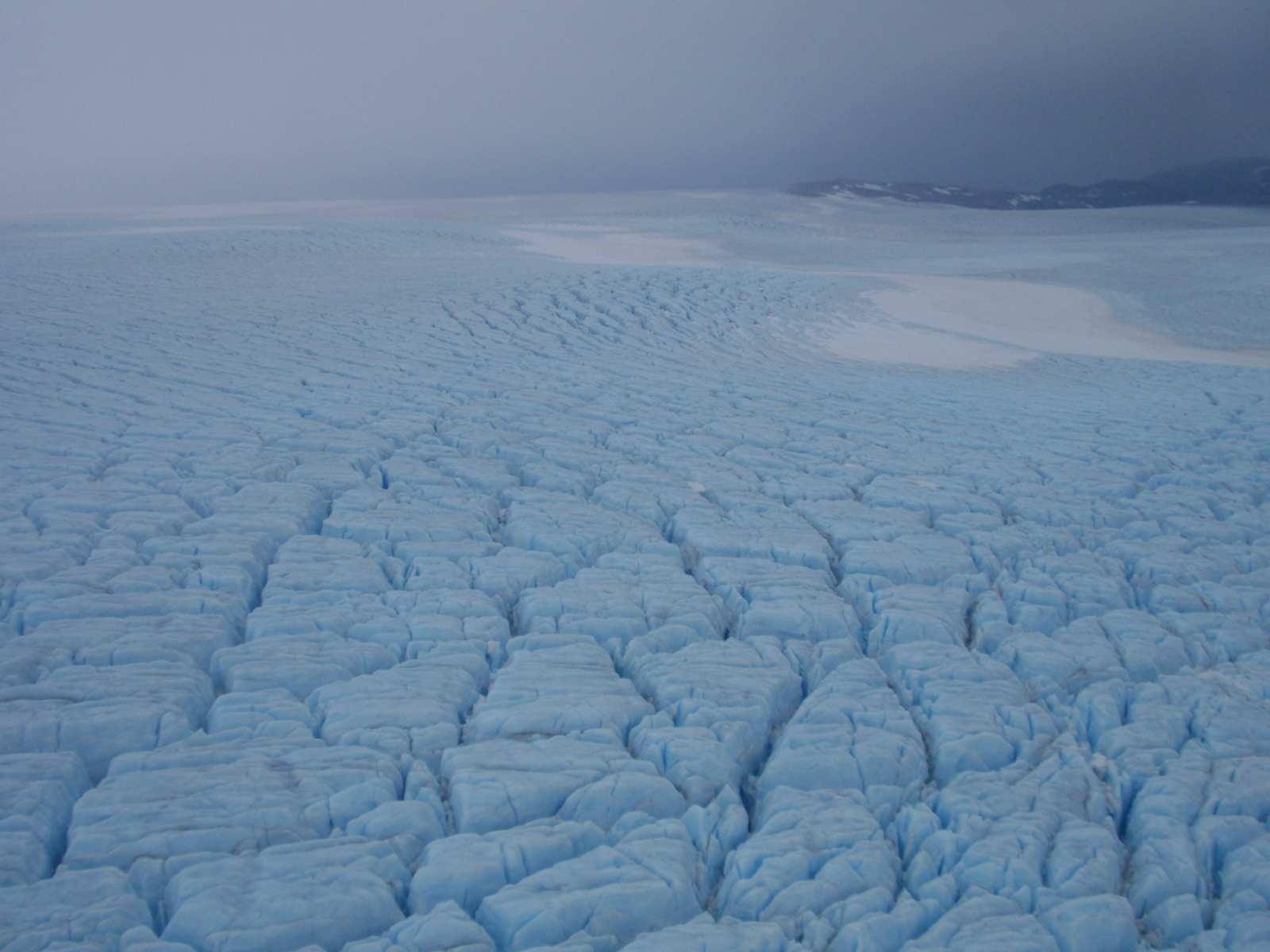 deceased one year later on November 30, 1943. The bodies of Bottoms, Pritchard, and the injured B-17 crewmember were never recovered. For their air rescue of B-17 crewmembers, Pritchard and Bottoms posthumously received the Distinguished Flying Cross. Benjamin Bottoms was also honored as namesake for a new Fast R
deceased one year later on November 30, 1943. The bodies of Bottoms, Pritchard, and the injured B-17 crewmember were never recovered. For their air rescue of B-17 crewmembers, Pritchard and Bottoms posthumously received the Distinguished Flying Cross. Benjamin Bottoms was also honored as namesake for a new Fast R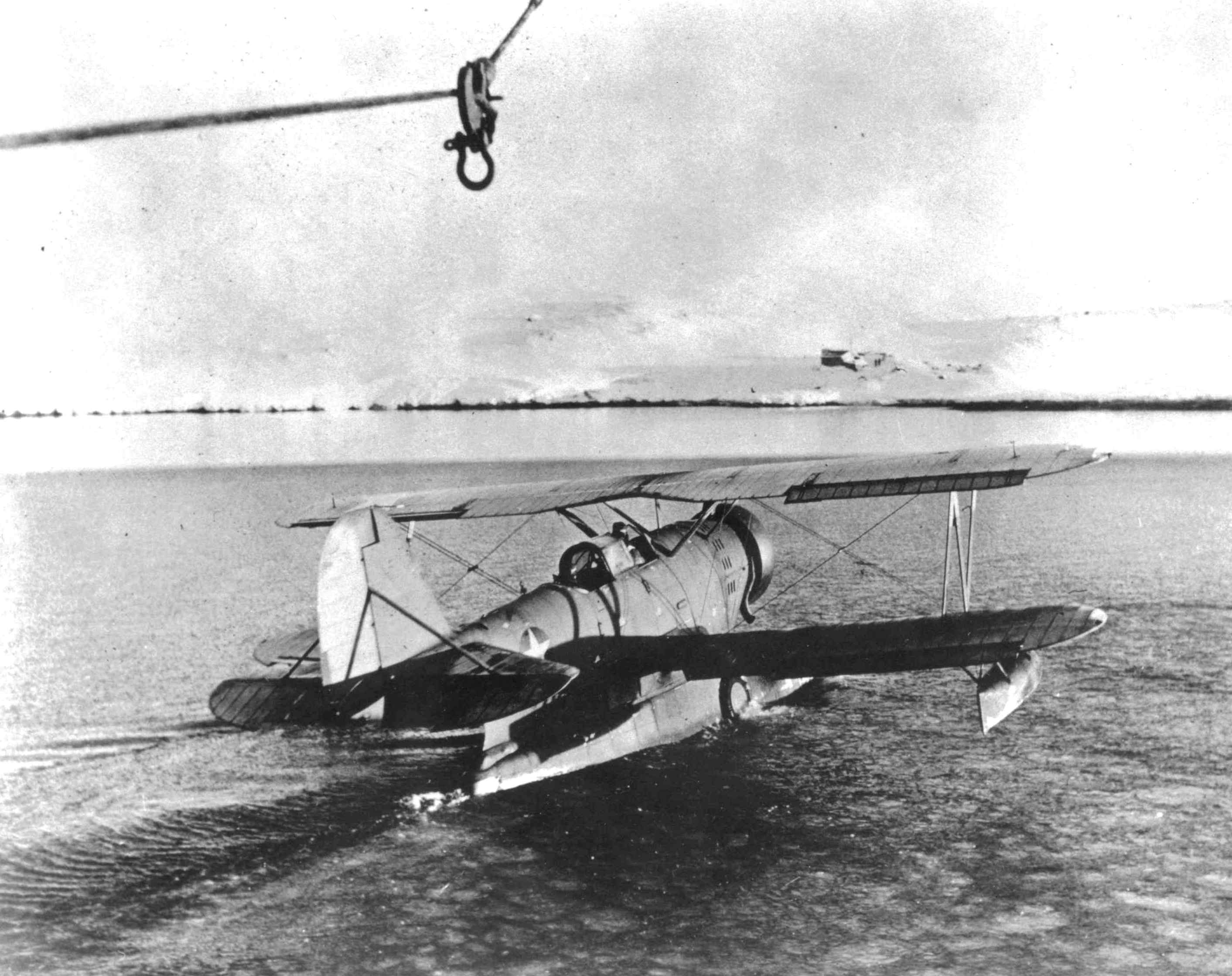 esponse Cutter.
esponse Cutter.
In 2009, an expedition traveled to the east coast of Greenland to locate the crash site of Bottoms’ aircraft. The expedition proved unsuccessful; however, in later years, a number of follow-up expeditions were launched to locate the site. The burial of the aircraft under 70 years of snowfall and the movement of the ice in which it was embedded have hampered these search efforts. The story of Bottoms and Pritchard and the attempts to find them served as the focus of the 2013 bestseller Frozen in Time, by Mitchell Zuckoff.
The horrendous air, sea and ice conditions experienced by Coast Guard personnel in the Greenland Patrol were arguably the deadliest environment experienced in World War II. Radioman First Class Benjamin Bottoms and Lt. John Pritchard battled those epic conditions while fighting to save stranded and suffering airmen. Despite valiant efforts to locate these Coast Guard aviators, they remain the service’s last MIA’s. They were members of the long blue line and their story is one of the U.S. Coast Guard’s finest examples of self-sacrifice and devotion to duty.